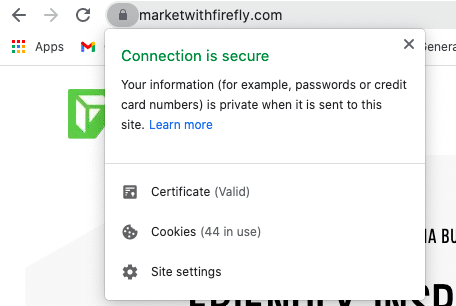
Why Do Websites Need An SSL (Secure Socket Layer)?

What Is An SSL?
SSLs (Secure Socket Layer) is an encryption protocol that forms a secure link between a web server and a browser. It was created by Netscape in 1995 for the purpose of protecting information and data shared across the internet. Basically, when you go to a website that has an SSL, any information you share with the website (payment info, address, email, etc) is shielded. SSLs were actually replaced by TLS (Transport Layer Security) in 1999, but everyone still refers to it as an SSL.
What Does An SSL Do?
SSLs encrypt personal information while in transit, making it more difficult for hackers to steal personal information. This means that when a user submits private data, the message becomes encoded. This encoding scrambles the characters that make up the message, so if it’s intercepted it cannot be read. Encryption keys are used to encode and decode messages, essentially locking them up before they’re sent and unlocking them once they’ve arrived safely at their destinations.
Why Do I Need an SSL?
When users submit their information online on a website without an SSL, it is like speaking on a phone while it’s on speaker. Everyone around the speaker can listen, learn and possibly steal crucial information.
SSLs give a website’s visitors assurance that their data is secure, and that the site is a trustworthy source to access. Additionally, if your site isn’t secure users won’t stay and might leave your site for a competitor who has a secure website.
Another benefit of having an SSL is another acronym, SEO. Since 2014 Google has used the presence of SSLs as a ranking factor and will favor those sites that use them. Google likes trustworthy sites because users like trustworthy sites. The higher you are in search result pages the more traffic you are likely to receive.
Firefly strongly recommends that all sites have an SSL and use HTTPS, in order to provide the best security for the website’s users.
85% of online shoppers avoid using un-secure websites.
93.2% of the browsing time on Chrome is spent on HTTPS pages.
How Do Users Know If A Website Has An SSL?
When users visit websites online, a secure, trustworthy website can be identified by its SSL . The SSL appears as an “S” within the URL, and can be found on the end of the abbreviation “HTTP” (HTTPS).
Other ways to determine if the website has an SSL is to look for a lock, found at the beginning of the URL.
There are also online SSL checkers that confirm if the website’s SSL is current and if the website can be trusted as a secure platform.


Types Of Online Submissions that Need an SSL
Firefly requires that websites, brochure, lead generation or e-commerce, are to have SSLs to ensure the protection of all types of submitted information. Most browsers now mark any site that does not have an SSL as insecure resulting in a broken lock and a red warning to potential customers browsing your website.
Some examples of submissions on websites that should be encrypted are:
- Employment Forms
- Login Portals
- Credit Card Information
- Contact Forms
- Surveys
If there isn’t a HTTPS in the URL of the form that is requesting personal information, Firefly recommends not submitting the form.
Need More Info?
Call us at 337-269-0299, or contact us online. We’re here to help! Firefly is available Monday – Friday, 8 AM CT to 5 PM CT.







